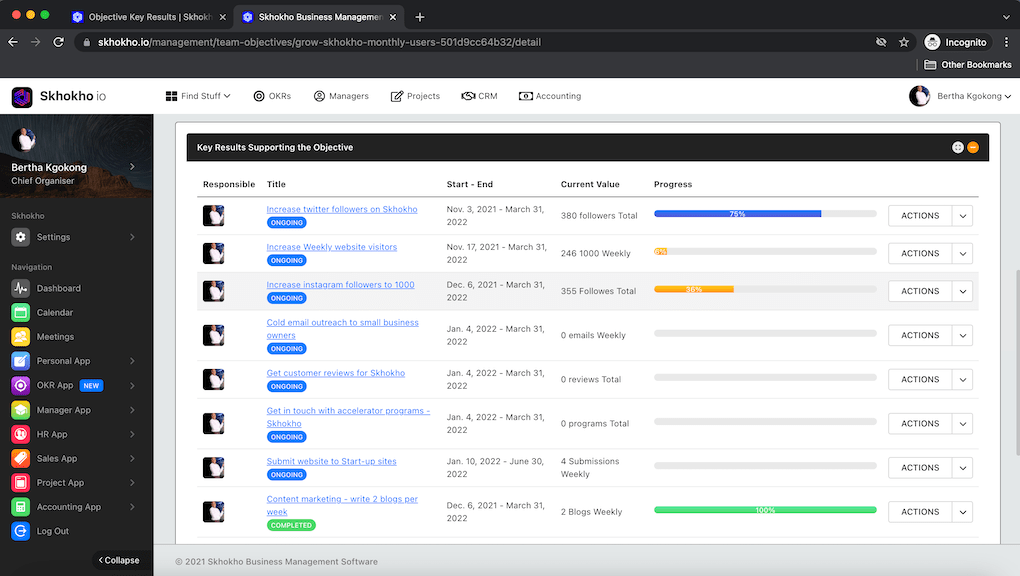From Chaos to Efficiency: How to Create a More Productive workforce
In this article we are going to be discussing how you can move your team from chaos to efficiency, by creating a more productive workforce.
In order to compete in the global economy, it is essential for businesses to create a high efficiency workforce. By maximizing the productivity of their employees, businesses can improve their bottom line and stay competitive.
There are a number of ways to create a high efficiency workforce, one of them being creating a work environment that is conducive to productivity. This includes providing the necessary tools and equipment, as well as adequate workspace.

Finally, businesses should continuously seek to improve their processes and systems in order to make their workforce more efficient. By doing so, they can stay ahead of the competition and thrive in today’s global economy.
Later on we will discuss how to utilise tools and business software to booster productivity.
Here are some tips to create and manage a more productive workforce.
Creating a productive workforce: Create a productive work environment
A productive work environment is key to a productive workforce. Make sure your employees have a comfortable place to work and the tools they need to be productive.
Ensure that you design your workplace to inspire productivity and creativity - employees should enjoy being at work, a happy employee is a productive employee.
Creating a productive workforce: Avoid creating toxic environments
As a business owner, it is important to be aware of the ways in which you can avoid fostering a toxic work environment. A toxic work environment can be harmful to your employees’ mental and physical health, and can also lead to decreased productivity and employee turnover.
One of the best ways to avoid a toxic work environment is to establish and enforce clear standards of behavior. These standards should be based on your company’s values and should be communicated to your employees.
A positive work culture is key to avoiding a toxic work environment. Employees should feel supported by their managers and coworkers, and should feel comfortable speaking up if they feel that someone is crossing a line.
Encouraging communication is another important way to avoid a toxic work environment. Employees should feel comfortable communicating with their managers and coworkers if they are feeling stressed or if they have any concerns about the work environment.
Finally, it is important to create a safe space for employees to speak up if they are feeling uncomfortable or if they have experienced harassment or discrimination. Employees should feel comfortable reporting any concerns to their managers or to HR.

Creating a productive workforce: Set a clear balance between reward and discipline
A productive workforce is a necessary component of any successful company. However, striking the right balance between reward and discipline can be difficult. Too much discipline can lead to a rigid and unproductive work environment, while too much reward can lead to a lack of focus and motivation.
One way to create a productive workforce is to set clear expectations for employees and to ensure that these expectations are met. This can be done through a combination of discipline and reward. For example, managers can reward employees for meeting deadlines or completing tasks on time, while also punishing them for poor performance or missed deadlines.
Another way to create a productive workforce is to foster a sense of team spirit. This can be done by promoting collaboration and communication among employees, as well as by providing incentives for team success. For example, managers can give employees bonuses or rewards for meeting team goals.
Ultimately, the key to creating a productive workforce is to find the right balance between discipline and reward. Managers should be willing to use both of these tools to motivate employees and to ensure that they are meeting the company’s expectations.
Creating a productive workforce: Promote a healthy work/life balance
The importance of a healthy work/life balance is often overlooked. Promoting a healthy work/life balance is not only good for your employees, but it can also be good for your bottom line. Employees who have a healthy work/life balance are more productive and less likely to be absent from work. They are also less likely to experience burnout, which can lead to decreased productivity and even resignation.
There are many ways to promote a healthy work/life balance.
One way is to ensure that your employees have adequate time off. This includes both vacation time and sick days. Employees should also be allowed to work from home on occasion to accommodate their personal needs.
Another way to promote a healthy work/life balance is to encourage your employees to take breaks. This includes both short breaks throughout the day and longer breaks, such as a weekend getaway.
Finally, it is important to create a work environment that is conducive to a healthy work/life balance. This includes offering flexible hours and allowing employees to work from home on occasion. By promoting a healthy work/life balance, you can help your employees stay productive and engaged. This, in turn, can lead to a more successful company.
Creating a productive workforce: Set clear goals and expectations
it's important to set clear goals and expectations. Employees need to know what is expected of them and what they can expect from their employer. This starts with having a clear job description and setting achievable goals. Employees should also be given regular feedback on their progress. If they know where they stand, they can adjust their efforts accordingly.
Set clear employee goals with Objective Key Results
Objective key results, or OKRs, are a performance management system that help you set clear employee goals. They're a way to measure progress and track results, and they work best when they're aligned with your company's overall strategy.
There are a few things to keep in mind when creating OKRs:
1. Objectives should be specific, measurable, achievable, relevant, and time-bound.
2. Objectives should be aligned with your company's strategy.
3. Key results should be quantifiable.
4. Objectives and key results should be reviewed and updated on a regular basis.
Here's an example of how OKRs might be used in a company:
Objective: Increase sales by 25%
Key result: Increase web traffic by 50%
Objective: Increase customer satisfaction rating by 5 points
Key result: Reduce customer complaints by 25%

Skhokho OKR view - OKR Software
Once you have decided on your objectives and key results, you can use an OKR software like Skhokho to record, measure and report on progress for these objectives and jey results. The key is to maintain allignment with your employees on the targets, so everyone knows what they are supposed to do and what is expected of them.
To get started with Skhokho OKR, simply register for a 14 day obligation free trial, no strings attached here:
Get in touch with us at hello[at]skhokho.tech









